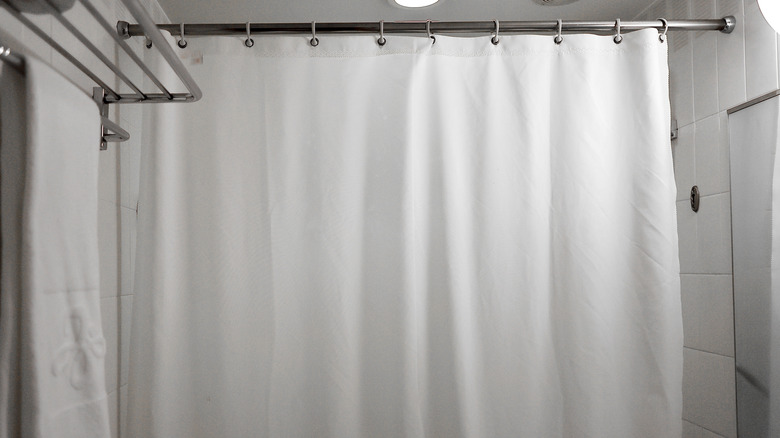Why You Should Always Put A Shower Curtain Liner Before Putting Peel And Stick On Rental Floors
Peel-and-stick tile floors are a convenient and budget-friendly way to upgrade a space without the mess or hassle of traditional flooring. They are generally easy to install, often requiring only a clean surface and a little patience, making them perfect for DIY floor upgrade projects. With a wide variety of styles and patterns available, they can instantly refresh a room and give it a polished, updated look. Some should think twice before installing peel-and-stick flooring, though, especially renters. This is because they don't always come off cleanly, potentially damaging the original flooring or leaving behind a difficult-to-remove sticky residue. This can lead to losing part of your security deposit if the landlord considers it an unauthorized or damaging modification. If you rent, you know how helpful that security deposit can be when you are settling into your new place. Fortunately, there is a way to install peel-and-stick tile flooring that poses no risk to the original floors. This hack involves placing a shower curtain liner on the floor prior to laying the tiles down.
With the shower curtain liner acting as a barrier between the tiles and the floor, no tile adhesive will come into contact with the floor, eliminating the chance of adhesive-related damage. When you are ready to move or change the flooring to another tile type, simply remove the liner and tile sheets as a single unit. This is a renter-friendly upgrade, but it's also a great way for homeowners to test out a new flooring style.
How to use a shower curtain liner to protect your floors from peel-and-stick tile damage
The first thing you need to do before starting this renter-friendly peel-and-stick solution is to make sure the floor that you will be tiling is clean and completely dry. You want to make sure there are no bumps and lumps in your flooring. Also, if moisture is present underneath the shower curtain liner, you could end up with mold growth. Next, lay your liner (or multiple liners if you are tiling a large area) across your floor, ensuring there are no creases, and secure it at the edges with painter's tape. Then, mark the center of the room and begin laying out the tiles from the center outward without peeling the backing off. When you reach the walls, mark the tiles and cut them so they are flush. Once you have measured and cut everything, you can proceed to remove the backing and adhere the tiles to the liner. Finally, place a self-adhesive transition strip at the edge of your flooring.
While this hack is both genius and renter-friendly, there are some considerations. If you live in a warm and humid climate, you risk mold growth beneath the plastic, no matter how well you clean it. If you are tiling a kitchen or bathroom, you also need to consider moisture levels. This hack is best suited for walk-in closets, hallways, and other areas where humidity and spills won't be an issue.
